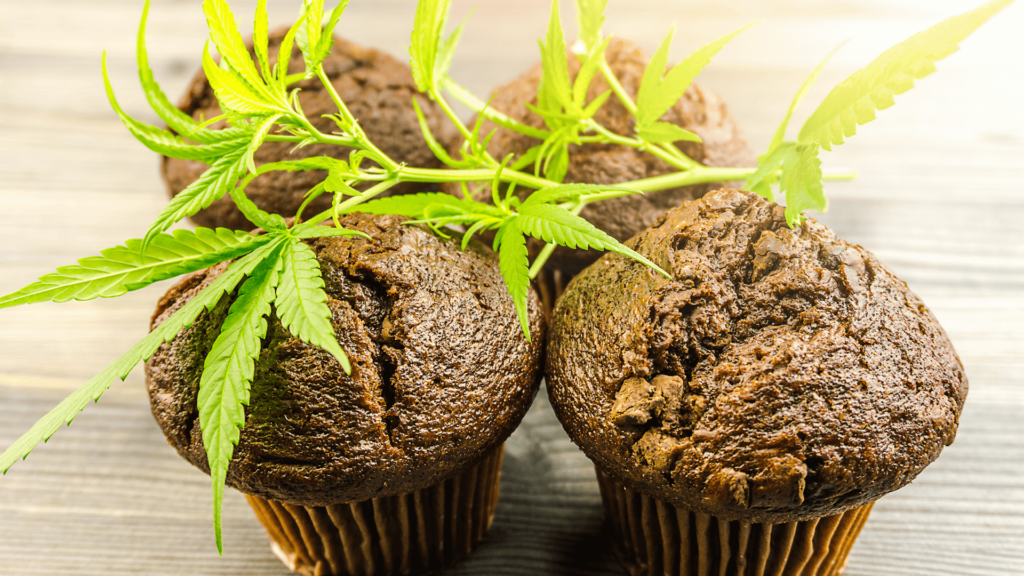There are many ways to enjoy cannabis, including edibles. They’re trendy for people who don’t like to smoke cannabis but instead consume it as an oil or food.
Edibles aren’t limited to bud. You can also create delicious edibles from dabs and concentrates. Creating edibles from concentrates and dabs is a little different from traditional edibles but doesn’t require any special equipment.
From a step-by-step guide to storage instructions, here is everything you need to know about making edibles with dabs and concentrates.

Part of cannabis’ plant anatomy includes trichomes, hair-like structures on the cannabis flower. On these tiny trichomes are collections of resin. This substance is what contains THC, the psychoactive ingredient in marijuana that gets us high.
Dispensaries collect this resin and sell it as concentrates. As the name suggests, concentrates are resin or wax with a high concentration of THC. This increases the purity and potency of the product and makes it a favorite among experienced cannabis enthusiasts.
Traditionally, cannabis concentrates are used for vaping and dabbing. And the most popular edibles are made with dried buds. So, why fuse cannabis concentrates and edibles?
Combining concentrates and edibles is a great way of creating out-of-this-world edibles that produce a high unlike anything you’ve experienced before.
There’s also the taste to think about. Edibles, as delicious as they are, tend to have a herb taste because of marijuana buds and the plant matter in the edible. Concentrates don’t have any plant matter, so there is less of a herby taste.
As you can see, concentrates let you enjoy a bigger high and a better taste. Who wouldn’t want that?
Before we jump into how to make your edibles, let’s look at the types of edibles you can make with concentrates.
Next, let’s look at how to make edibles at home with dabs and concentrates.
To make edibles from concentrates, you’ll need the following equipment:
Because concentrates are so potent, dosing your edibles can be difficult. Too much, and your edibles can become too strong.
To see how much THC you’ll get per serving, use this formula:
(Grams of concentrate available x THC potency percentage x 1000) ÷ edible servings
Let’s give it a try. Let’s say you have .3 grams of concentrate, with a potency of 70%, and your recipe makes 12 brownies.
(0.3 x 0.70 x 1000) ÷ 12 = 17.5 mg of THC per serving.
If 17.5 mg is too much, you can cut your brownies into smaller sizes so that you don’t ingest as much THC in one serving.
If you want your edibles to be more potent, make fewer, larger brownies to increase the THC density and potency by increasing the amount you consume in a serving. Alternatively, increase the amount of concentrate you use.
Keep in mind that edibles sold by cannabis dispensaries usually contain about 5-10mg of THC per serving so you can use that as a baseline.
Next, you need to decarb your concentrate. Cannabis contains THCA, which is an inactive cannabinoid without psychoactive effects. This changes to THC when heat is introduced, which is the substance that gets us high.
You need to activate the concentrate through decarbing, i.e., heating the concentrate to convert THCA to THC.
To decarb your concentrate:
You have three cooking options for your THC concentrate: cooking, baking, and infusing. Here’s how to manage each.
First, let’s look at cooking. As the name suggests, you can put the concentrate in your cooking to give your food an extra zing. This works best with concentrates that get soft during decarbing. Hard concentrates won’t dissolve as easily.
To make the most of the THC in the concentrate, add it to the food toward the end of the recipe. Let it heat up and mix it in as the concentrate dissolves.
One thing to note: don’t cook the concentrate in foods over 300°F. If the temperature is too high, it’ll damage the terpenes and cannabinoids and affect your high.
Similar to cooking, soft concentrates work great in baking and it’s one of the more popular methods for creating delicious edibles. Put the concentrate straight into your baking mixture and spread evenly before putting your baking in the oven.
If your decarbed concentrate is hard and challenging to work with, putting it straight into edibles isn’t an option. The concentrate won’t dissolve during the cooking or baking process.
Fortunately, you can fix this. Instead of adding the concentrate straight to your edible mixture, infuse it with a fat like butter or oil, then add it to your recipe. This makes the concentrate much easier to work with and broadens what you can do with it.
First, select the fat of your choosing. THC is lipophilic, which means it needs to bond with fat to be metabolized by human bodies.
While you can use any oil to create infusions, like cannabis-infused coconut oil, the taste can influence the end result. If you’re going to use the oil to make food, a neutral oil like canola oil will work better.
Next, fuse your concentrate with your fat of choice. You’ll need:
Add the concentrate and your oil of choice into a saucepan or slow cooker for 3 hours. Keep the oil temperature between 150 and 200°F. Too high and you risk damaging the terpenes and cannabinoids.
Take the infusion off the heat source and stir it to ensure an even mixture. Then let it cool. You can now use this mixture in any recipe that needs fat and store it for later cooking and baking.
The best way to store edibles is to follow these simple but effective rules.
As with any drug, you have to consider your safety. Keep these points in mind when enjoying edibles.
Edibles take longer to kick in than other mediums like smoking and vaping. Some edibles can take up to 2 hours to show any effect. During the waiting period, you might feel the urge to take another edible.
Don’t do it. Give your edible enough time to kick in, and don’t stuff yourself with edibles while trying to fast-track the high. When the THC does catch up with you, it could leave you experiencing a very intense high, one you might not be ready for.
Whatever food item you added your concentrate to is still a perishable item. And, even with proper storage, food does still expire. So, always make sure your perishable edibles are fresh and safe to eat.
If the edible smells or looks weird after a few days or weeks, give it a skip and make a new batch. Getting food poisoning while high is not an experience you want to go through.
Here are some fixes for common edible issues.
It’s recommended that you wait 90 minutes to 4 hours to feel the effect of an edible. If you still felt no effect after all that time, then check the dosage.
Use the sum we outlined earlier to figure out exactly the potency of every edible in your batch.
A good starting dose for beginners is 5 to 10 mg of THC per edible. Those with more experience can go higher.
If your edibles had enough THC to fit into the above categories, then it might be that you applied too much heat during the decarbing and cooking process.
Too much heat during the decarbing and cooking process can damage the terpenes and cannabinoids in the concentrate. This can lower the THC potency and taste or even destroy the cannabinoids completely and prevent any high.
To prevent this, make sure you follow the temperature instructions to a T. Don’t decarb the cannabis in an oven higher than 200°F, and don’t cook at a temperature higher than 300°F. Low and slow is the best method with edibles.
Lastly, if your edibles have a bad taste, like an overwhelming herb taste or bitter taste, consider using a different butter or oil. Combining the strong taste of cannabis with a strong-tasting oil or butter can produce an overwhelming flavor.
Instead, opt for neutral oils. They work great with most foods and baked goods and mask some of the herb taste that comes with edibles.
There are many fun ways to enjoy cannabis. A popular method is edibles, which let you infuse delicious foods and baked goods with THC goodness. While edible recipes traditionally involve using dried buds, you can make edibles from concentrates and dabs.
Collect your stash of concentrates, decarb it, measure your dosage, and add it to your favorite food, baked goods, or cooking fat.
The best edibles are made from the best weed. That’s why you should visit your nearest Embarc location today! We offer high-quality cannabis concentrates, buds, and more, all guaranteed to elevate your edibles to the next level.
